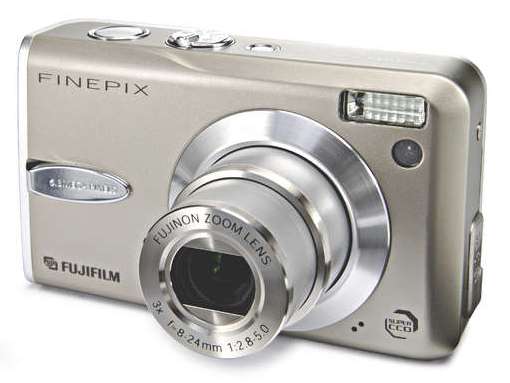TechRadar Verdict
Fujifilm's latest FinePix is a camera that won't fail to impress. The camera's designed to be user friendly but it will satisfy the more demanding consumers who want semi-manual and automatic shooting modes as well as accurate exposure and subtle tonal rendition.
Pros
- +
Powerful
Easy to use
Cons
Why you can trust TechRadar
Fujifilm is betting that its latest compact camera offers us more for our money than just another giant increase in megapixels. The Fujifilm FinePix F30 takes the baton from last year's highly rated F11 model, restyled the exterior and, alongside the Casio Z1000 (see page 134 has a full resolution ISO 3200 setting in a compact camera.
A two-tone titanium and aluminium outer shell has replaced the cold, steel colour of the F11 and the former square shape has been updated to a smoother and sleeker design. Build quality feels reassuringly solid and the attractive finish more than matches other, higher priced compacts.
You make adjustments easily via conveniently placed buttons, a mode dial, a zoom lever and a control wheel. It's ready for action less than 1.5 seconds after power up and the menu system enables straightforward selection of the 19 scene modes. In addition, it inherits many of the features of its predecessor, including a 36- 108mm (35mm equivalent) zoom lens and a 2.5-inch LCD monitor.
The main selling point of the F30 is its high ISO 3200 setting that enables you to capture sharp images in low light with minimal noise. Fujifilm says that it can achieve this better than the competition because of its Real Photo Technology.
Setting standards?
Certainly, when you use the F30 in a variety of low, bright and high contrast lighting conditions, it performs superbly, producing accurately exposed and rendered images. Image sharpness also proves to be acceptable for a camera in its class, even though you may find some evidence of softness around the corners in the wide-angle setting.
Image quality fanatics will discover that it's best to use the camera under ISO 800 and resort to the highest setting only in emergencies. While the overall image noise levels are low, ISO 1600 and 3200 seem to create a pointillist effect in low light. Colours are produced accurately but it's also worth noting that the Auto White Balance can output files with a slight blue tint.
To capture images, you can choose one of eleven shooting functions, including the usual Portrait, Landscape and Sports modes, as well as more specific Snow, Beach, Underwater, Museum and Party option.
Sign up for breaking news, reviews, opinion, top tech deals, and more.
One particularly innovative feature is the 'Natural Flash' mode that eliminates having to decide how to illuminate subjects in low light. It takes two shots in quick succession: one image using ambient lighting and the other with a burst of fl ash.
There's no full manual function but for semi-manual creative control, the choices are Aperture and Shutter Priority as well as exposure compensation. Metering options include Spot, Average and Multi. There are also eight white balance modes that can deal with a wide range of lighting colour casts.
The F30 really does fit well into your hand and as a truly lightweight camera it never becomes a burden to carry around. The antiglare LCD screen is easy to view in normal bright light but, ingeniously, automatically increases its brightness in darker conditions.
Good battery life
If you want an even better framing experience you can increase the screen refresh from 30 to 60 frames per second for smoother, faster live action.
This will reduce the battery life slightly but snap-happy users will be reassured to know that the rechargeable lithium-ion battery lasts for about 580 shots; impressive to say the least.
Overall, the F30 delivers a good package. Fujifilm has built on the success of the preceding two models and has fine-tuned the F30 to deliver a compact that offers a wide range of solutions for capturing high-quality images, whatever the conditions. Michael Roscoe
Via PhotoRadar
Tech.co.uk was the former name of TechRadar.com. Its staff were at the forefront of the digital publishing revolution, and spearheaded the move to bring consumer technology journalism to its natural home – online. Many of the current TechRadar staff started life a Tech.co.uk staff writer, covering everything from the emerging smartphone market to the evolving market of personal computers. Think of it as the building blocks of the TechRadar you love today.
